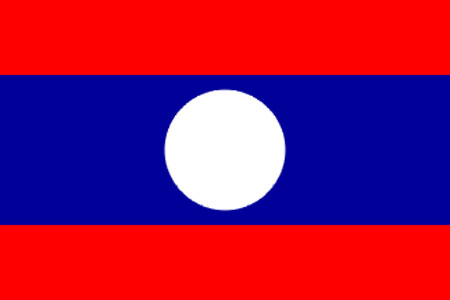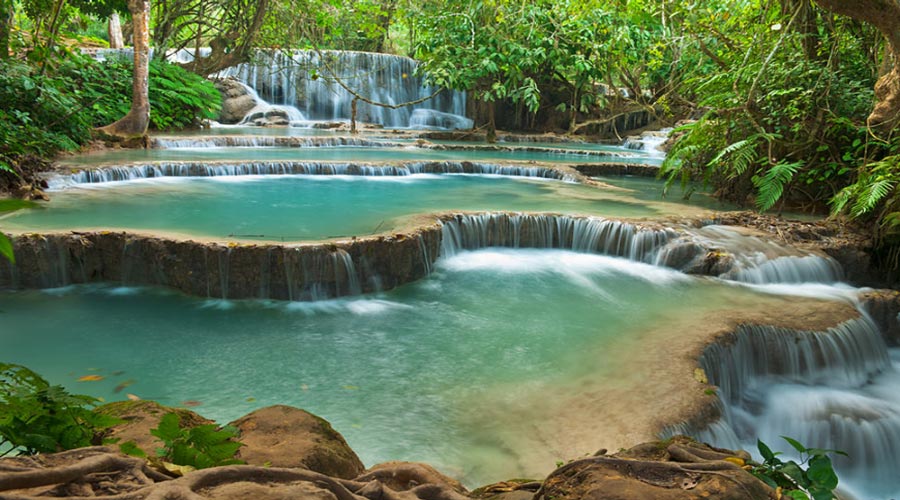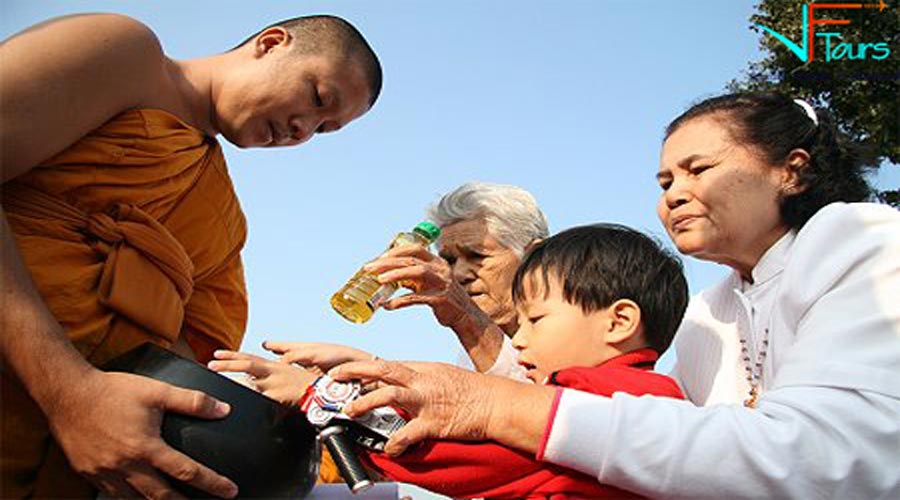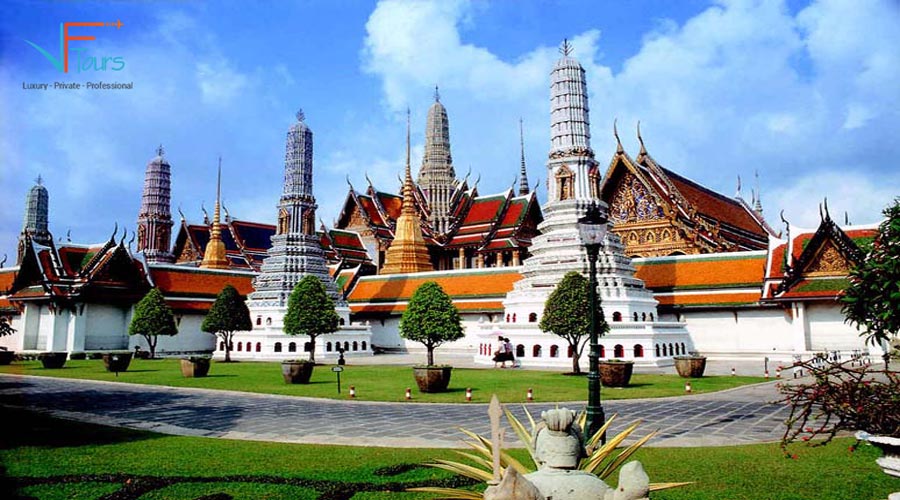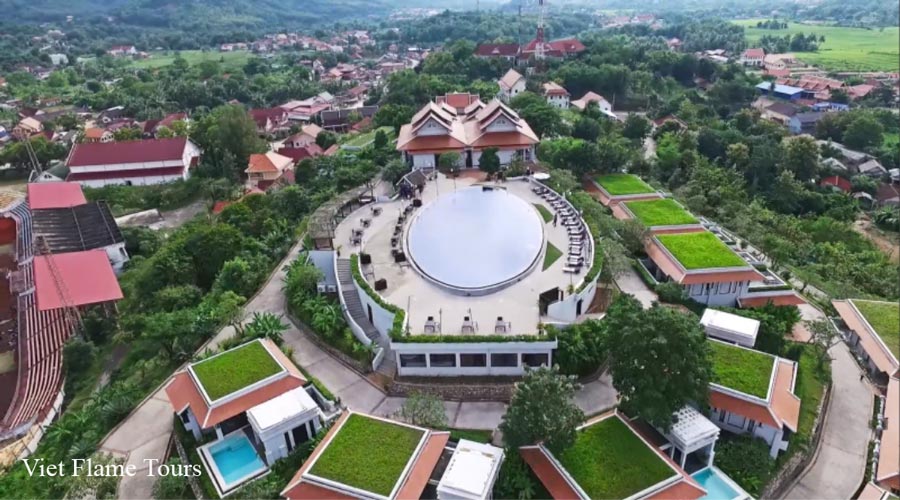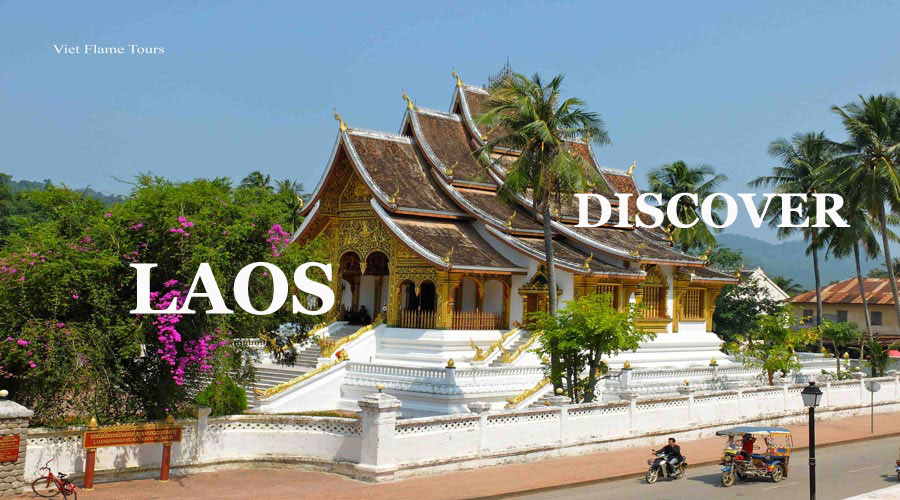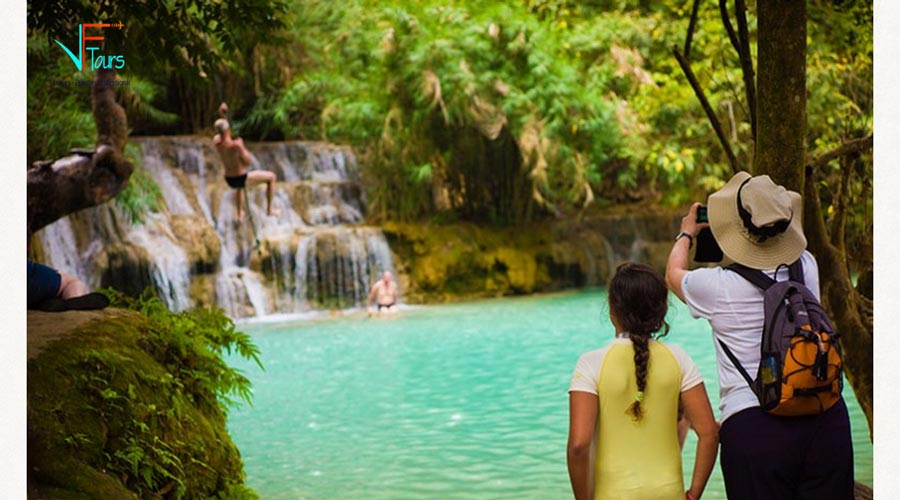Welcome to Laos

Cambodia-Flag-vietflametours
- Capital: Vientiane
- Official languages:Lao
- Spoken languages:Lao, Hmong, Khmu, French
- Religion: Buddhism 64.7%;Laotian folk religion 31.4%; Christianity 1.7%;Islam 0.8%;Other 1.3%
- Area Total: 237,955 km2 (91,875 sq mi) (82nd)
- Currency: Kip (₭) (LAK)
- Time zone: UTC+7 (ICT)
About Laos
Laos is bounded to the north by China, to the northeast and east by Vietnam, to the south by Cambodia, to the west by Thailand, and to the northwest by Myanmar (Burma).
Laos, landlocked country of northeast-central mainland Southeast Asia. It consists of an irregularly round portion in the north that narrows into a peninsula-like region stretching to the southeast. Overall, the country extends about 650 miles (1,050 km) from northwest to southeast. The capital is Vientiane (Lao: Viangchan), located on the Mekong River in the northern portion of the country.
Government and politics
The Lao People’s Democratic Republic is one of the world’s only socialist states openly endorsing communism.The only legal political party is the Lao People’s Revolutionary Party (LPRP). The head of state is President Bounnhang Vorachith, also General Secretary of the Lao People’s Revolutionary Party
Climate
Laos has the typical tropical monsoon (wet-dry) climate of the region, though the mountains provide some variations in temperature. During the rainy season (May to October), the winds of the southwest monsoon deposit an average rainfall of 50 to 90 inches (1,300 to 2,300 mm), with totals reaching some 160 inches (4,100 mm) on the Bolovens Plateau. The dry season (November to April) is dominated by the northeast monsoon. Minimum temperatures average between 60 and 70 °F (16 and 21 °C) in the cool months of December through February, increasing to highs of more than 90 °F (32 °C) in March and April, just before the start of the rains. In the wet season the average temperature is 80 °F (27 °C).
Economy
The Lao economy depends heavily on investment and trade with its neighbours, Thailand, Vietnam, and, especially in the north, China. Pakxe has also experienced growth based on cross-border trade with Thailand and Vietnam.In 2009, despite the fact that the government is still officially communist, the Obama administration in the US declared Laos was no longer a Marxist–Leninist state and lifted bans on Laotian companies receiving financing from the US Export-Import Bank. In 2011, the Lao Securities Exchange began trading.In 2012, the government initiated the creation of the Laos Trade Portal, a website incorporating all information traders need to import and export goods into the country…
Languages
The official and dominant language is Lao, a tonal language of the Tai linguistic group. However, only slightly more than half of the population speaks Lao natively.[citation needed] The remainder, particularly in rural areas, speak ethnic minority languages. The Lao alphabet, which evolved sometime between the 13th and 14th centuries, was derived from the ancient Khmer script and is very similar to Thai, and easily understood by readers of Thai script.Languages like Khmu and Hmong are spoken by minorities, particularly in the midland and highland areas. A number of Laotian sign languages are used in areas with high rates of congenital deafness.
Religion
64.7 percent of Laotians are Theravada Buddhist, 1.7 percent are Christian, and 31.5 percent are other or traditional (mostly practitioners of Satsana Phi)according to the 2005 census. Buddhism has long been one of the most important social forces in Laos. Theravada Buddhism has coexisted peacefully since its introduction to the country with the local polytheism.
Beautiful photos of Laos
- kuang-sri-Waterfall-Luang-Prabang–Laos-tour
- laos-tour-vietflametours
- laos-royal-palace
- luang-prabang-view-hotel
- royal-palace-museum1
- Tat-Kuang-Si-Waterfall-Luang-Prabang-Laos

